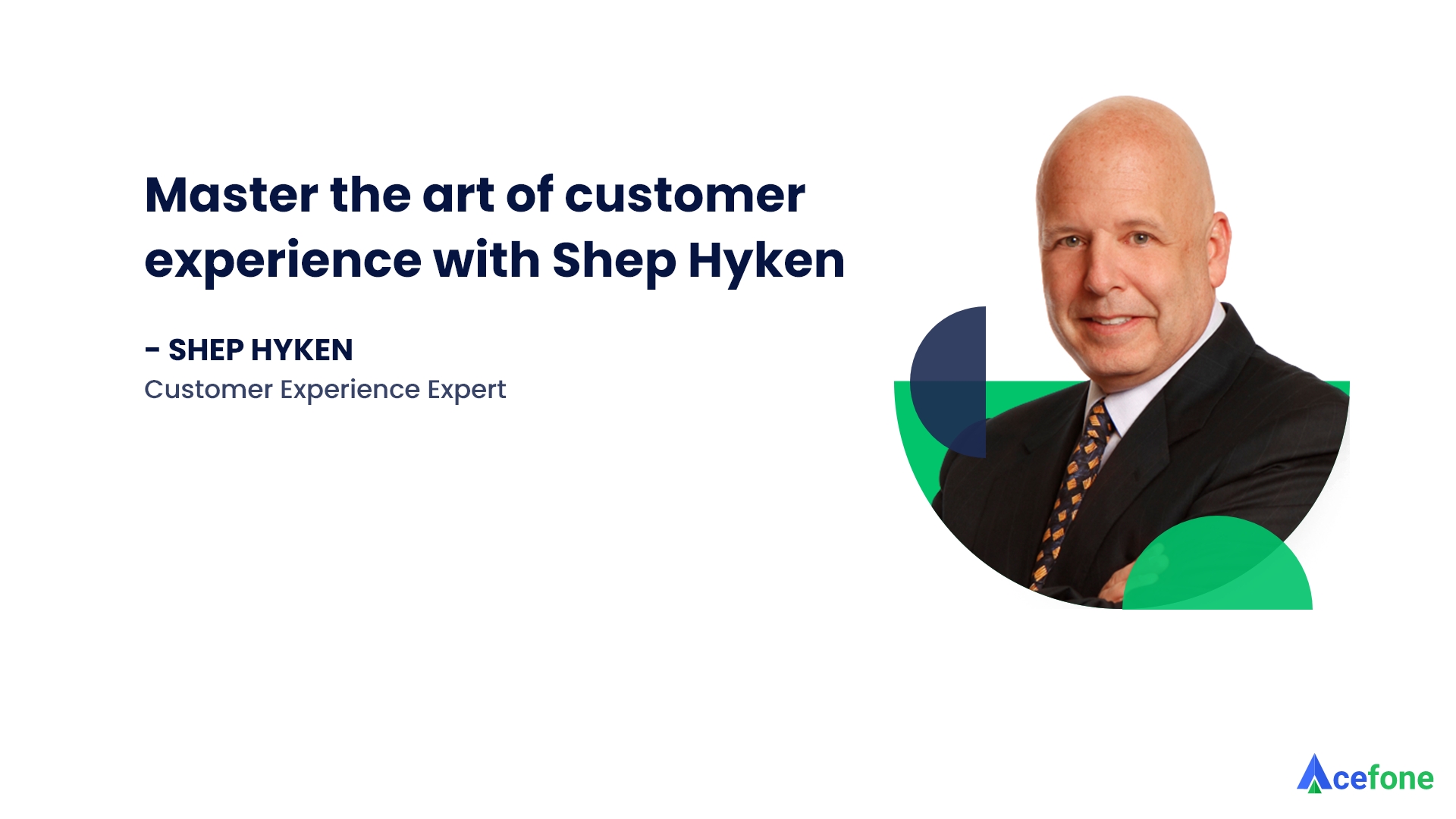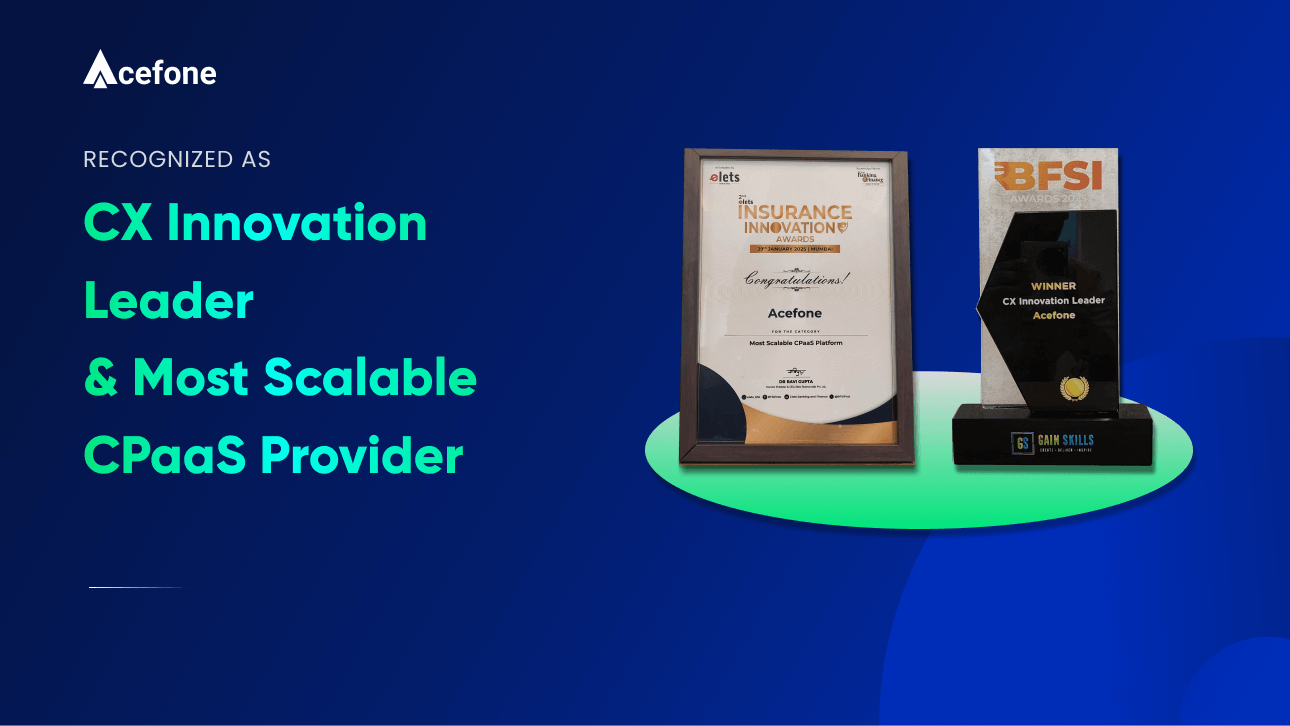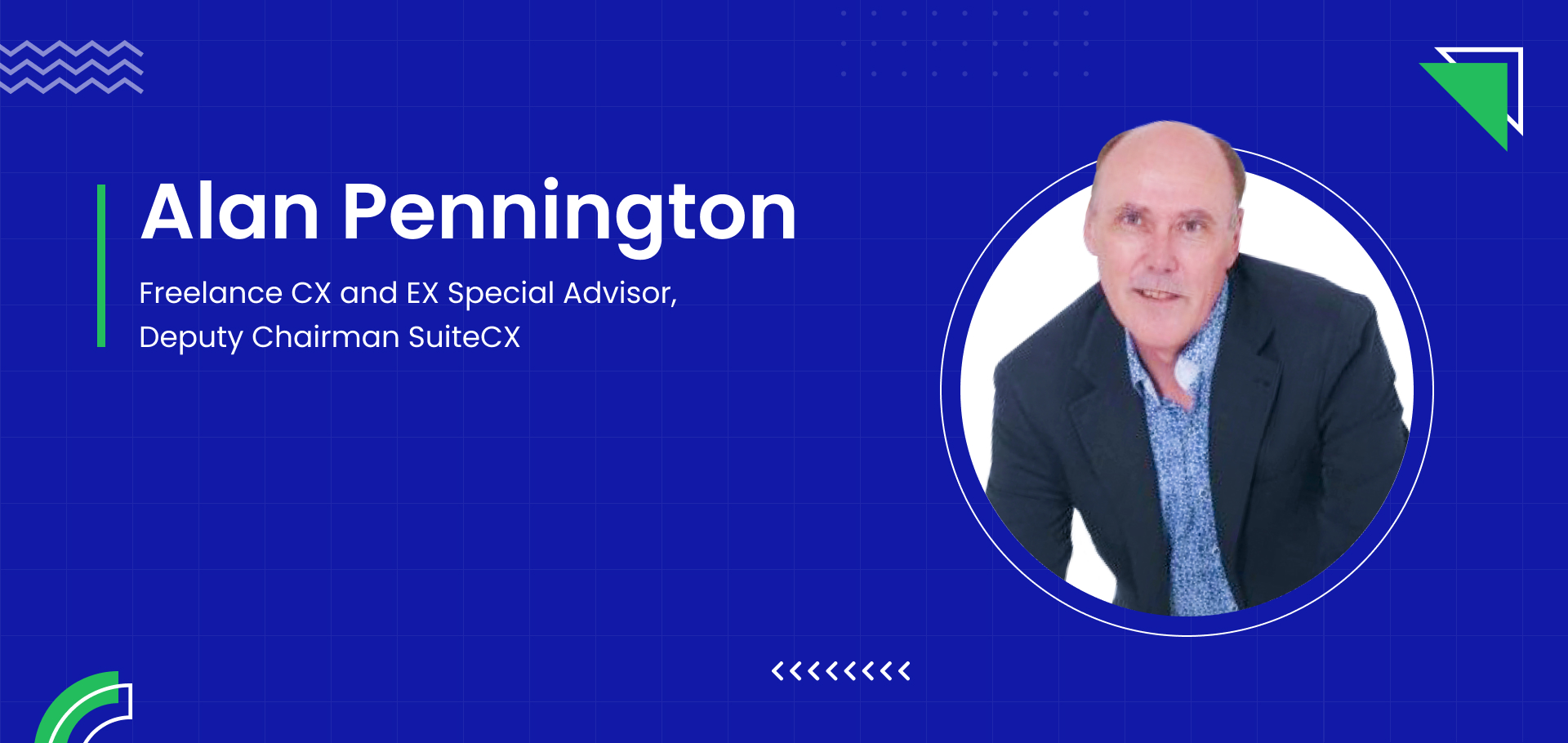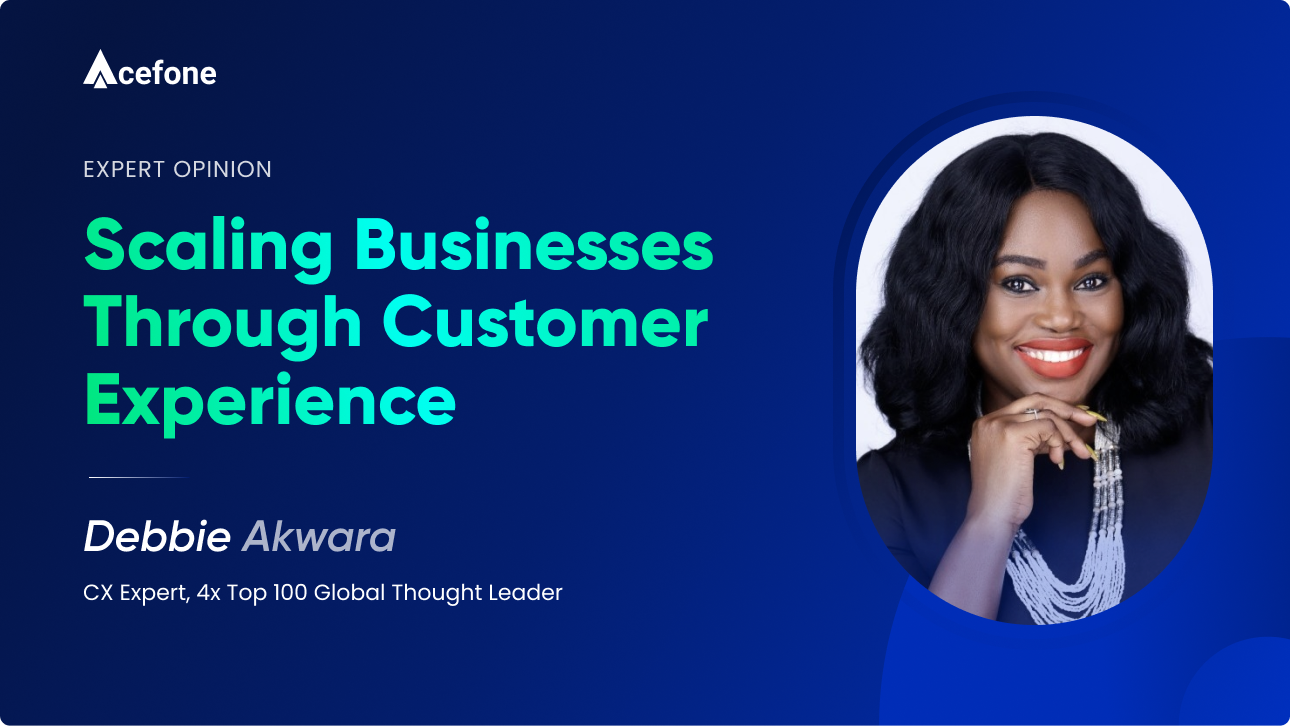Your company’s relationship with the customers can be considered much more than improving your product ratings or reducing wait times. Understanding the customer journey is all about learning what your customers actually want and what their pain points are.
Customers don’t just buy stuff from you. They establish a whole journey of decisions, purchases, and emotions that are associated with the products and services.
Thus, it would help if you focus on improving the experience at each stage of the customer journey. Great experiences make it easy for your customers to navigate, shop, and do business with you.
With that being said, we are back with our Expert Opinion Series, this time with Customer Service-Experience expert and the Chief Amazement Officer of Shephard Presentations, Shep Hyken.
Shep helps organisations and companies to build loyal relationships with their customers and employees. He is a New York Times and Wall Street Journal bestselling author and has written some of the best CX books including Moments of Magic, The Cult of the Customer, The Loyal Customer, and Be Amazing or Go Home.
In this interview, Shep shares his passion for customer service, his journey, and valuable lessons on CX.
Q1. What is the first thing that made you passionate about customer service?
Shep – It was a lesson that my parents taught me when I was 12 years old. I started a ‘birthday party magic show business’. After my first paid engagement, my parents suggested that I write a thank you note.
A week later, they suggested that I follow up, thank the parents again who’d hired me to do that magic show, ask them for feedback about the show and then act on that feedback to make the show better. Back then, I had no idea that this was customer service. That’s precisely what it was—show appreciation, get feedback, improve (whether it be a process or product), etc.
Q2. Tell us about your journey in the customer service industry.
Shep – After I graduated from college, within a year, I attended an event where two professional motivational speakers presented. Those speakers were Tom Hopkins and Zig Ziglar. I already had an entertainment background—first the birthday parties, then the graduation, and working in nightclubs and corporate events during college.
I realised I could go on stage and make a speech like that. I realised my passion was all about customer service. So, I wrote a speech, and then I created a list of 100 companies that would potentially hire me to deliver that speech. I just called them and that was that.
Since then, I’ve worked with hundreds of companies and learned from all of them, did a tremendous amount of research, met a lot of other experts in the field, and continued to be fascinated with customer service and experience.
Q3. What are some of the biggest obstacles that businesses face when ensuring good customer service?
Shep – There are a number of obstacles, but two that stand out right away. The first is whether or not leadership decides they want to be a customer-focused organisation. If yes, then they don’t just have to say it, they have to be it.
They have to create a culture focused on customers, hire the right people, and really live their customer service vision. If they don’t do that…nothing’s going to change. The second bit is that we must have good people in the business taking care of both internal and external customers.
All employees must be aligned with the company’s vision.
Q4. Since you have helped many businesses in transforming their customer service strategies over the years, what are some major changes that you noticed in customer service?
Shep – Here’s where I get to have a bit of fun because contrary to what many people think—and many people disagree with me on this—I don’t think anything has changed over the years in customer service.
If you think about it, a customer is coming to you with a problem, a question, or a complaint. It is then our job to resolve and deal with the complaint. In the end, the customer wants to be happy—which, by the way, is what the company wants as well. Nothing has (really) changed.
That’s the same as it was 10 years ago, 20 years ago, or even 50 years ago.
The beginning is the same, and the outcome is the same. What’s changed is the middle. There are so many different ways customers can communicate with us. Technology has allowed us to open multiple channels through which we can resolve issues.
Q5. Is there any advice that works across different types of businesses for improving their customer service?
Shep – Customer Service is not just a department. It is a philosophy that has to be embraced by every employee within the organisation, from the most recently hired to the most senior executive (say, the CEO) and leadership of the company, period.
It is important that every employee, even if they never see a customer, recognises the contribution that they make to either doing something behind the scenes or supporting somebody in the process that does involve the customers.
For instance, people in the warehouse that pack the products. That person never sees the customer, but their job is important and has a huge impact too.
Q6. Would you like to share some tips to maintain the level of good customer service?
Shep – Number one, manage the first impression. It’s important. And it sets the tone for whatever interaction that follows.
Number two, manage the last impression because it’s a lasting one. Make sure you properly thank the customer. Make sure you properly follow up if necessary, because as mentioned, the last impression is a lasting impression.
Number three is consistency. Customers love a consistent and predictable experience, especially when it’s positive. So, deliver a consistent experience every day.
From a personal standpoint, come to work every day with the idea that you’re going to do your best. As a matter of fact, try to be better today than yesterday, every day, and you’ll always be working at achieving your best.
Q7. What are the key points that businesses should keep in mind while implementing customer service strategies?
Shep – I think it’s important to consider customer service as cultural; therefore, it should be part of the culture of the company. Leadership needs to define what that culture is. My suggestion is to do it in a one-sentence, memorable vision statement about customer service or experience.
My favourite is what The Ritz-Carlton has done. They have nine words that define what their customer service vision (or their guest service vision) is: “We’re ladies and gentlemen serving ladies and gentlemen”. When you go to work at the Ritz, this is what you are taught. It’s easy to memorise. Then they are trained with ‘Gold Standards’ on how to deliver that vision.
Q8. Do you recall a company that has gone the extra mile for their customers?
Shep –There are so many great examples of companies offering amazing, almost what I would call over-the-top experiences for their customers.
Now I caution you that an over-the-top experience is not necessary to impress a customer. It is the consistent, predictable, and above-average experiences that do. But every once in a while, you have an opportunity to go that extra mile.
I love telling the story of my taxicab driver from Dallas, TX, who I used for a number of years until he finally retired. Whenever I would be picked up, there would always be a bottle of water or soda for me to drink.
He always had a newspaper, and the cab was spotlessly clean. And you want to know what he did after my first trip? He sent me a thank you note, and every holiday, he sent me a holiday card. Wow! Talk about going the extra mile and doing a little something extraordinary.
There are plenty of stories I could share with you where problems created opportunities to go above and beyond. However, let’s just put it this way: it doesn’t often take a major effort to go that extra mile.
But when you do, it makes that customer so happy and could create a customer base that not only comes back but becomes loyal, comes back over and over again, and shares their experiences with others.
Q9. Have you noticed any missing elements that businesses are not able to deliver while serving the customers?
Shep –There are plenty of times I notice missed service opportunities. These are the companies that I refer to as ‘customer service laggards’. They aren’t paying attention, and they haven’t done the proper training. If there’s one thing that companies miss, it’s not just that they don’t train their employees to deliver service; they think that training them one time is enough.
Customer service training isn’t something you did; it is something you keep on doing. And you remind your team and your employees over and over about how important it is to stay customer-focused.
That only happens when you create ongoing training that repeats the same messages, which creates sustainability. Then you hold all employees accountable for what you expect in your customer service vision.
Q10. We’d love for you to share some insights from your famous book The Cult of the Customer: Create an Amazing Customer Experience That Turns Satisfied Customers Into Customer Evangelists.
Shep – Sure. Let me very quickly go through the Five Cults of the Customer. These are actually phases of what the customer goes through and experiences when they do business with you.
The first phase is one of uncertainty. The Cult of Uncertainty is where customers may have heard how good you are, but they don’t know until they experience it.
Number two is the Cult of Alignment. This is where they’ve heard how good you are. You’re starting to do business with them, they are aligning themselves to what their vision is for a great experience, and are starting to experience this.
This leads us to the third cult, which is the Cult of Experience. This happens when the customer experiences what the company wants them to experience.
They then move into the Cult of Ownership. Once this experience becomes predictable and consistent, the customer owns it. They know it’s going to happen like this every time they do business with you.
If that owned experience is a positive experience, they move into the Cult of Amazement. This is where predictable and consistent experiences are always at least a little bit above average. By the way, that’s my definition of “amazement”—a little bit above average all the time. It’s not over-the-top, which will happen once in a while.
Amazement is not about being super extraordinary (which, once in a while, does happen), but being consistently and predictably a little bit better than the average. And when you do that, you’re in that cult of amazement.
Now, once in a while, there’s going to be a problem, an issue or complaint that happens to the best of the best companies. If the company has trained their people properly then they can turn those Moments of Misery™, into what I call Moments of Magic®—positive experiences that don’t just fix the problem but restore the confidence of the customer.
Wrapping Up
This brings us to the end of the insightful interview with Shep Hyken. To know more about Shep customer service strategies, you can visit his website.
To read interesting blogs on customer service and experience, visit Acefone, and explore our vast and ever-expanding knowledge base.














